What are the greenest countries in Europe?
21 Mar Landscaping & Turfcare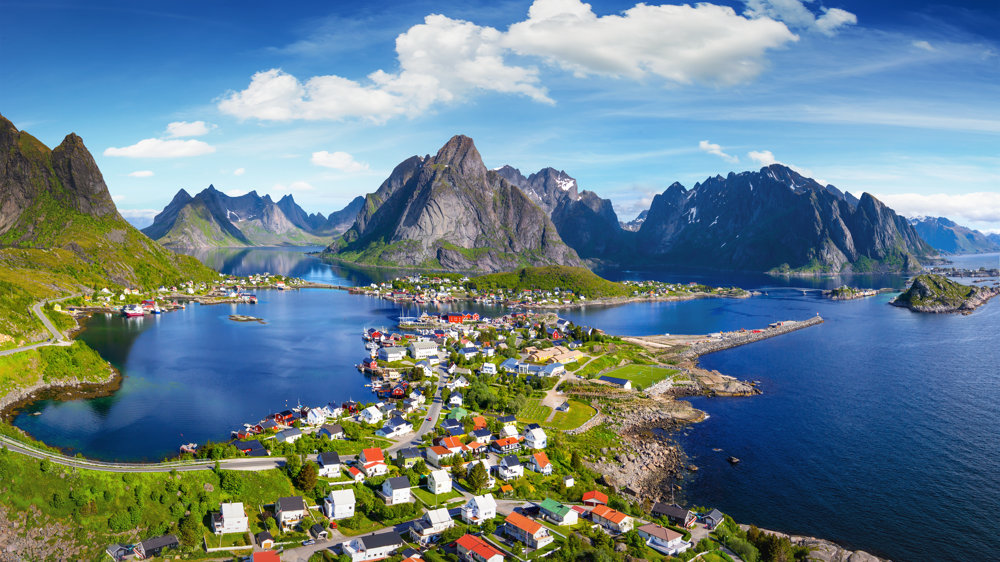
In a continent where urban landscapes often intertwine with nature's splendour, Europe unveils a different kind of richness – the lush and expansive green spaces that provide refuge from the hustle and bustle of modern life.
We’ve already uncovered the greenest cities in Europe, but now we take a step back to look at the wider picture – can you guess which country in Europe boasts the most green space?
From the sprawling gardens of historic estates to the vast urban parks that breathe life into busy metropolises, we'll uncover the countries where greenery takes centre stage – and where landscape professionals are needed most to manage it all.
Top five greenest countries in Europe
According to the European Environment Agency, in 38 member countries, 42 percent of urban areas are considered to be green space. That's a lot of greenery!
But it’s not just urban areas to consider when judging the greenest countries in Europe – outside of the cities, this is largely determined by the spread of forests and grassland. To be the greenest country in Europe, there must be a healthy mix of both urban and rural green spaces.
Here we look at the top five greenest European countries based on the percentage of area covered in natural greenery from dense forests to local parks, counting down from fifth place to first.
Ireland
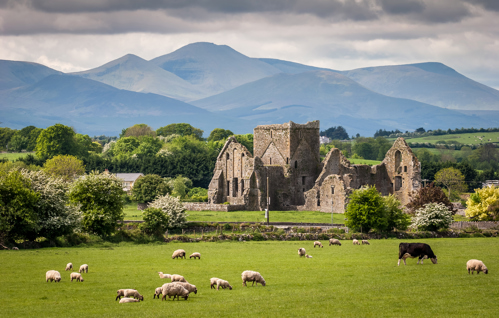
Ireland has been nicknamed the Emerald Isle for good reason. So the Republic of Ireland’s place in the top five greenest countries in Europe should come as no surprise.
With forests covering roughly 11 percent of Ireland’s land area, the rest of its landscape is characterised by rolling hills and green countryside, and its relatively low population density means there’s plenty of room for more green open spaces.
Ireland’s cities are no concrete jungles either; Dublin, Cork and Limerick are all well-known for their parks, walkways and green open spaces.
In fact, Dublin’s most notable outdoor space, Phoenix Park, is one of the largest urban parks in Europe with seven square kilometres of parkland to visit – that’s twice the size of New York’s Central Park!
Switzerland
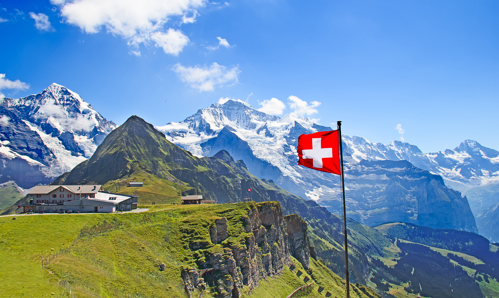
Europe’s fourth greenest country is Switzerland. Best known for its picturesque Alps, lakes and glaciers, Switzerland is a hot spot for tourists during the winter months.
But a Swiss summer can be just as breathtaking as snow is replaced by vast stretches of mountain greenery and meadow.
It’s no wonder that Switzerland is considered a natural playground for outdoor enthusiasts across the globe, with 31 percent of its overall land area made up of forest.
And it’s not just the wilder side of Switzerland that draws attention. Locations such as Lake Geneva are known for their surrounding gardens. Visitors can expect well-maintained lawns and flourishing botanicals, all with the backdrop of Europe’s largest central body of water.
It’s a prime example of the role landscapers play in enhancing the natural beauty of a destination.
Norway
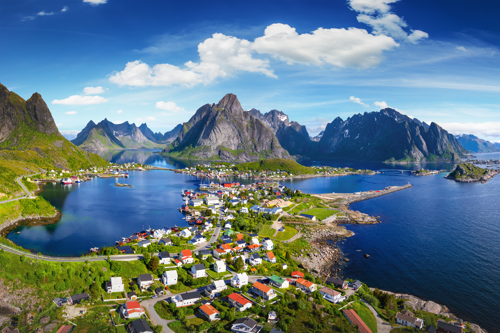
Norway’s capital, Oslo, may have ranked as the greenest city in Europe, but when it comes to the country as a whole, Norway has to settle for bronze.
Known for breathtaking landscapes of fjords, mountains and lush greenery, 37 percent of the country’s total land area is taken up by forests while a further 37 percent is grassland. Norway has 48 designated national parks created to protect its finest areas of natural beauty, making sure green spaces remain green.
Norway’s most northern regions may be better known for snow, but beneath the layers of ice lies a surprising amount of greenery. Destinations such as the Lofoten Islands, which reside north of the Arctic Circle, are covered with ice and snow in winter, but once June arrives the islands turn a brilliant green thanks to heavy rainfall.
Norway’s prioritisation of green space aligns well with its status as one of the most sustainable countries in Europe, with low greenhouse gas emissions, innovative renewable energy strategies and waste management solutions. The concern and protection offered for green spaces is a clear sign of an environmentally conscious country.
Sweden
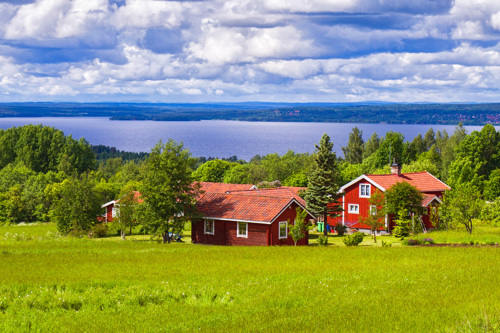
The second greenest European country is Sweden. Like many of its surrounding neighbours, Sweden's landscape is characterised by sweeping forest, contributing to 69 percent of its overall land area. Like in Norway, nature conservation is a priority; 15 percent of Sweden is protected green space, which includes 30 national parks.
Sweden’s extensive forests may claim the majority of green space in the country, but its city parks are also of note. In Stockholm alone, there are 26 different parks, including the world's first national city park, known as the Ecopark. It spans over a huge 27 square kilometres, allowing visitors to spot herons, roe deer and foxes right in the city centre.
Finland – the greenest country in Europe
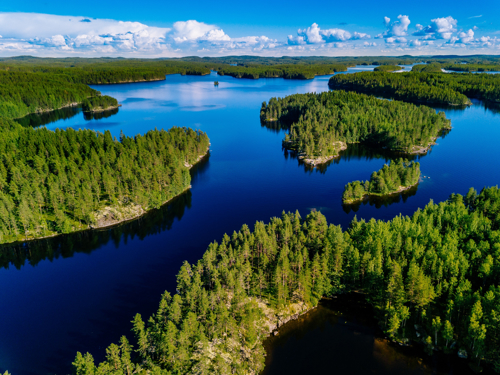
It may not be a huge surprise to see Finland take top spot here – it's a country renowned for natural beauty, being home to Europe's largest lake district and last untamed wilderness, and is the world's largest archipelago.
According to the European Environment Agency, an estimated 75-80 percent of its total land area is designated as green space, from wild forests to urban city parks.
So why does Finland have so much greenery, untouched by urban sprawl? The 41 national parks managed by the Metsähallitus – an enterprise that uses, manages and protects state-owned land – covering a total area of 9,892 square kilometres, certainly help.
The parks range from the likes of Lemmenjoki National Park, one of the largest areas of roadless wilderness in Europe at 2,850 square kilometres, to those aimed at boosting biodiversity in urban spaces, such as Porvoo National Park, which is a more modest ten square kilometres.
Finland’s green spaces do more than make it an impressive destination to visit – they contribute to its ecosystem vitality and commendable sustainability efforts.
Honourable mentions
Our top five countries have rightly taken the spotlight, but that doesn’t mean other countries in Europe aren’t taking important steps to increase green space.
In France, introducing urban green spaces is a priority. Ambitions to make Paris the greenest city in Europe by 2030 have already seen the expansion of existing parks and plans for four urban forests – the first of which was planted in 2023. Since Anne Hidalgo became mayor in 2014, 30 new green spaces have been created, and many more are set for development.
It’s a similar case in Italy, where major cities like Rome and Milan are looking to increase urban green space. Authorities in the latter are planning to create 20 new urban parks, while in Rome there are plans to build 100 new parks outside the Aurelian walls within ten years.
Initiatives to protect and increase green spaces are becoming increasingly common across Europe – it’s a positive step in the right direction for the environment.
Landscaping green spaces
These green countries are leading the way when it comes to investing in green spaces, but others are quickly catching up. With more countries investing in a greener future and a healthy environment, landscaping professionals are needed more than ever to manage it all.
As more people get to enjoy these spaces, whether by hiking in a national park, taking a step through history in château gardens or resting in one of Europe's many city parks, there'll be a greater need to keep new parks and gardens in excellent shape.
Efficient and reliable commercial level machinery will be key in helping busy landscapers to keep grounds functional and appealing – an easy feat when you’re Powered by Kawasaki.
Your work as a professional landscaper is vital for the environment and society. Share your work with us via our social media, so we can see the outcomes of your hard work!
You may be interested in
-
The most iconic green spaces in Europe

-
When should you scarify a lawn and how to revive it afterwards

-
How to weatherproof a lawn and protect it from flood, frost and drought

-
Landscaping trends for 2024

-
Have you fallen for any of these landscape maintenance myths?

-
Your handy guide to lawn diseases in Europe







